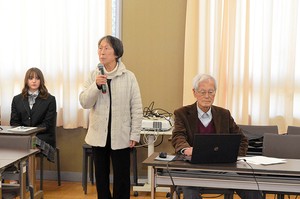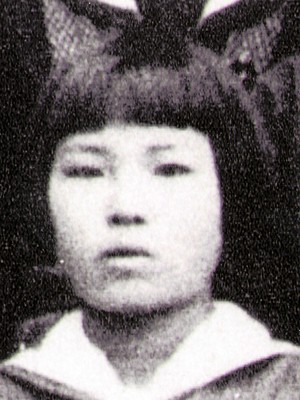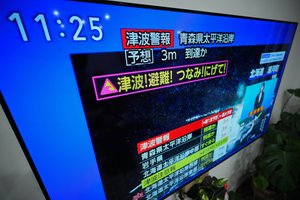Vox Populi, Vox Dei is a daily column that runs on Page 1 of The Asahi Shimbun.
March 7, 2023 at 11:53 JST
 “Hakobe” (chickweed) flowers (Asahi Shimbun file photo)
“Hakobe” (chickweed) flowers (Asahi Shimbun file photo)
Sniffling from hay fever, I strolled around Tokyo where colorful spring flowers were starting to emerge--purple violets, yellow “fukujuso” (Amur adonis) and early-blooming pink “kawazusakura” (Kawazu cherry blossoms).
Looking down, I saw white “hakobe” (chickweed) flowers blooming in clusters around the roots of roadside trees. Because their white petals are divided into two parts, they looked like they had 10 tiny petals.
Haiku poet Hakyo Ishida (1913-1969) penned this piece: “Chickweeds/ Sparrows the color of scorched earth.”
Having lost his mother-in-law and other relatives in the Tokyo firebombing of March 10, 1945, Ishida came to the capital city the following year and wrote the above haiku.
The neighborhood where he had lived, which was in present-day Koto Ward, became “just one vast burnt-out area without any noticeable buildings,” according to “Waga Chichi Hakyo” (My father Hakyo) by Nobuo Ishida.
The massive air raid was said to have killed 100,000 people and reduced 270,000 homes to ashes. In my mind’s eye, I see chickweeds sprouting on the soil and bearing white flowers in early spring, and sparrows pecking and nibbling on them. True to their name, chickweeds are favored by small birds.
Burnt ruins were the subject of so many of Ishida’s poems that they came to be known collectively as “Hakyo’s Scorched Earth Haiku.”
Here’s another one: “At a burnt ruin/ Transparency of water on a cold day.” And another: “Lamenting the passing of spring on a burnt ruin/ I sip a little sake.”
A volume of an anthology of his works carries an editor’s note to the effect that Ishida had tuberculosis and was in and out of the hospital so often, he told people, “What else am I good for other than to write haiku about burnt ruins?”
He was reluctant to go to war because of his obsession with haiku. But while serving on the Chinese front, Ishida handled carrier pigeons, which enabled him to understand the structure of their wings and learn the names of the colors of their feathers.
“That was my one and only beautiful memory I brought back from that horrible war,” he said.
Among colorful spring flowers, chickweeds are modest and less noticeable, but perhaps Ishida was attracted to them because of their ability to survive even on scorched earth.
Wanting to look at them again in the late afternoon, I returned to the spot where I’d seen them earlier, but their petals were already closed.
--The Asahi Shimbun, March 7
* * *
Vox Populi, Vox Dei is a popular daily column that takes up a wide range of topics, including culture, arts and social trends and developments. Written by veteran Asahi Shimbun writers, the column provides useful perspectives on and insights into contemporary Japan and its culture.




















A peek through the music industry’s curtain at the producers who harnessed social media to help their idols go global.
A series based on diplomatic documents declassified by Japan’s Foreign Ministry
Here is a collection of first-hand accounts by “hibakusha” atomic bomb survivors.
Cooking experts, chefs and others involved in the field of food introduce their special recipes intertwined with their paths in life.
A series about Japanese-Americans and their memories of World War II